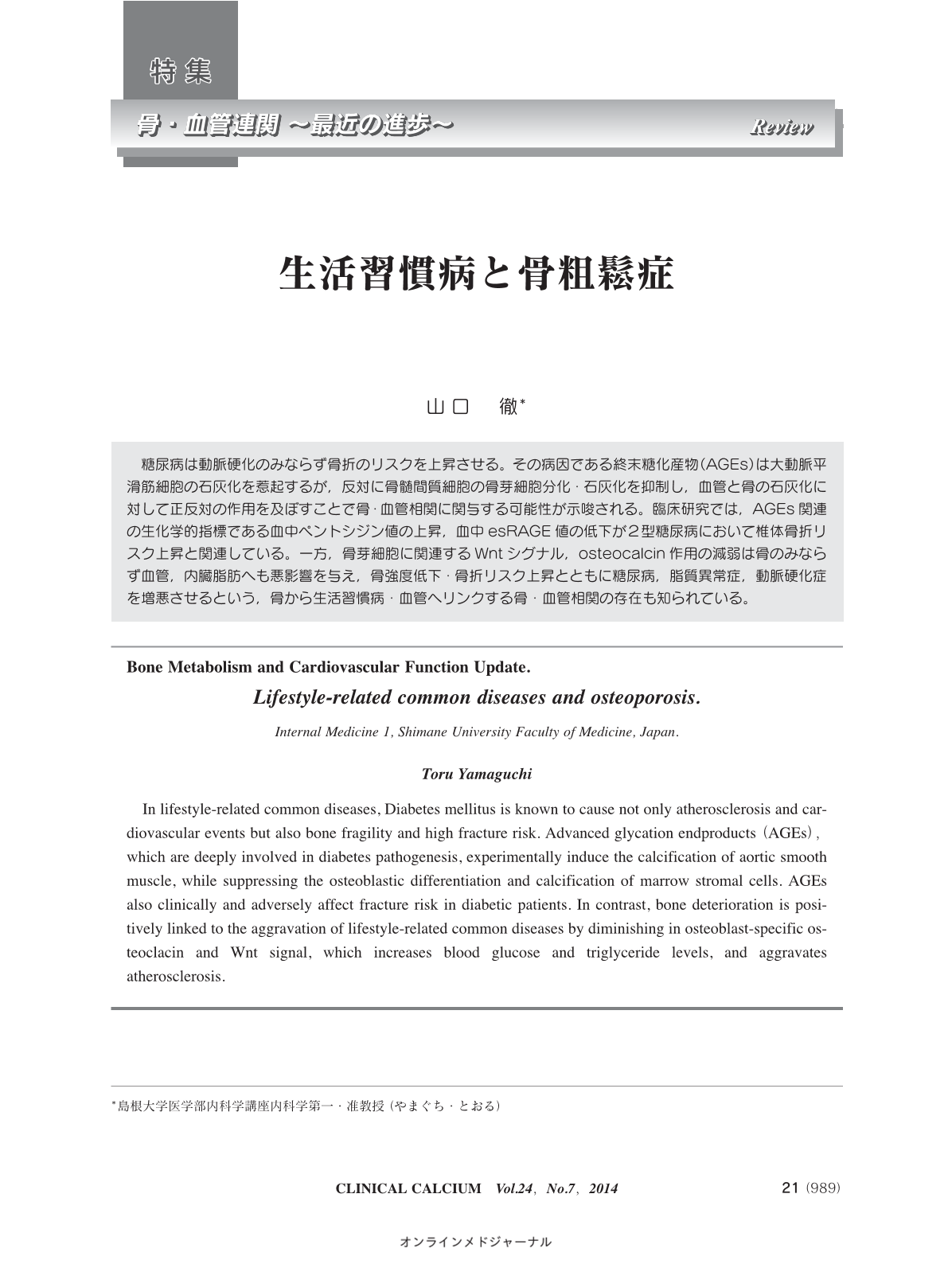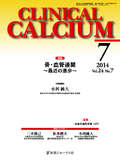Japanese
English
- 有料閲覧
- Abstract 文献概要
- 1ページ目 Look Inside
- 参考文献 Reference
糖尿病は動脈硬化のみならず骨折のリスクを上昇させる。その病因である終末糖化産物(AGEs)は大動脈平滑筋細胞の石灰化を惹起するが,反対に骨髄間質細胞の骨芽細胞分化・石灰化を抑制し,血管と骨の石灰化に対して正反対の作用を及ぼすことで骨・血管相関に関与する可能性が示唆される。臨床研究では,AGEs関連の生化学的指標である血中ペントシジン値の上昇,血中esRAGE値の低下が2型糖尿病において椎体骨折リスク上昇と関連している。一方,骨芽細胞に関連するWntシグナル,osteocalcin作用の減弱は骨のみならず血管,内臓脂肪へも悪影響を与え,骨強度低下・骨折リスク上昇とともに糖尿病,脂質異常症,動脈硬化症を増悪させるという,骨から生活習慣病・血管へリンクする骨・血管相関の存在も知られている。
In lifestyle-related common diseases, Diabetes mellitus is known to cause not only atherosclerosis and cardiovascular events but also bone fragility and high fracture risk. Advanced glycation endproducts(AGEs),which are deeply involved in diabetes pathogenesis, experimentally induce the calcification of aortic smooth muscle, while suppressing the osteoblastic differentiation and calcification of marrow stromal cells. AGEs also clinically and adversely affect fracture risk in diabetic patients. In contrast, bone deterioration is positively linked to the aggravation of lifestyle-related common diseases by diminishing in osteoblast-specific osteoclacin and Wnt signal, which increases blood glucose and triglyceride levels, and aggravates atherosclerosis.



